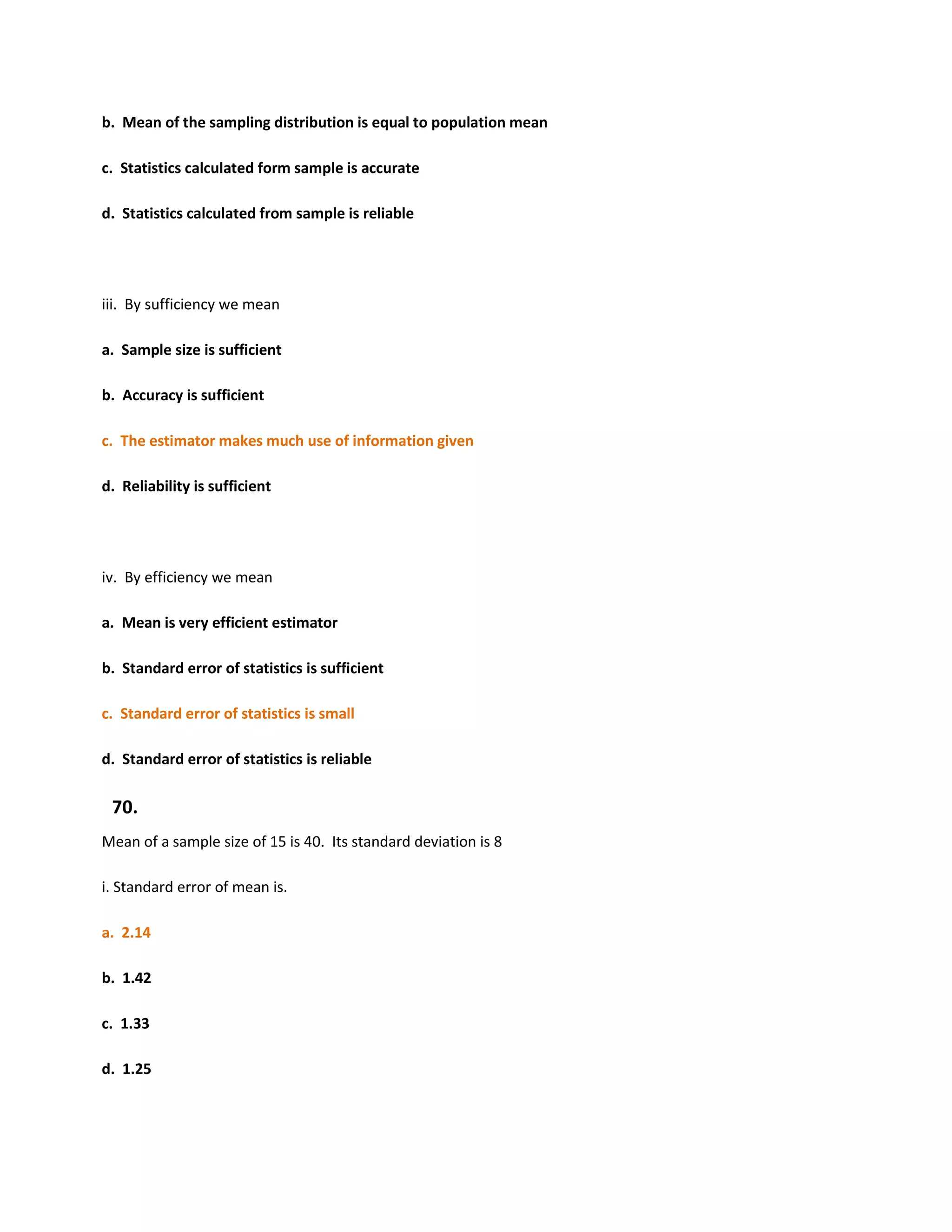This document provides a model paper for the statistics course "MB0040 Statistics for Management". It includes 3 sections: Section A contains 40 multiple choice 1-mark questions, Section B contains 20 multiple choice 2-mark questions, and Section C contains 15 multiple choice 4-mark questions. The full marks for the paper are 140. The questions cover topics such as data collection methods, measures of central tendency, probability, probability distributions, hypothesis testing, and time series analysis.



![c. 3
d. 0
15. Median of discrete even series is given by
a. [(n + 1) / 2]th value
b. n / 2th value
c. 5th value
d. [(n + 1) / 4]th value
16. To find median value data should be arranged in
e. Any order
f. Alternatively high and low values
g. Ascending order
h. Haphazard way
17. Whenever data deals with speed, distance and time then the best average is
a. Median
b. Mode
c. G.M.
d. H.M.
18. Quartiles are
a. Affected by extreme values
b. Middle 20 % values
c. Not affected by extreme values
d. Affected by Modal value
19. A good measure of variation should be
a. Based on some values
b. Affected by extreme values
c. Rigidly defined
d. Fluctuating](https://image.slidesharecdn.com/stat-answer-key-121221130903-phpapp02/75/Stat-answer-key-4-2048.jpg)





























